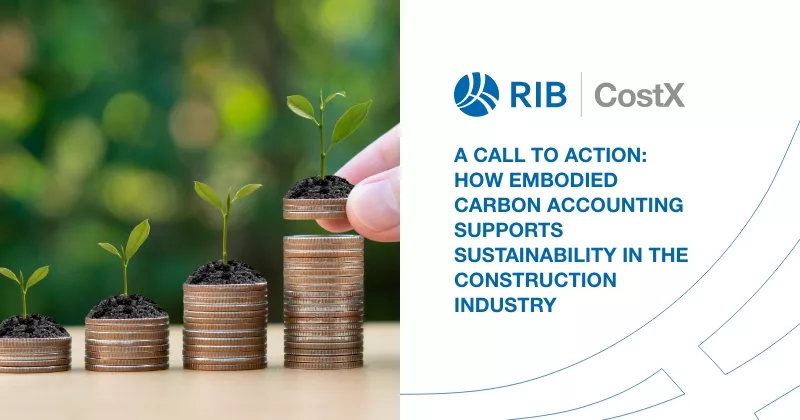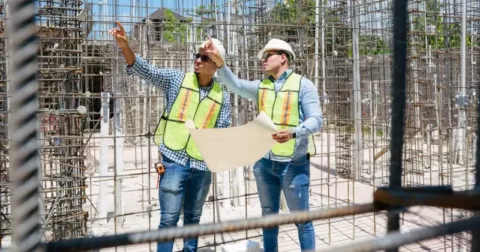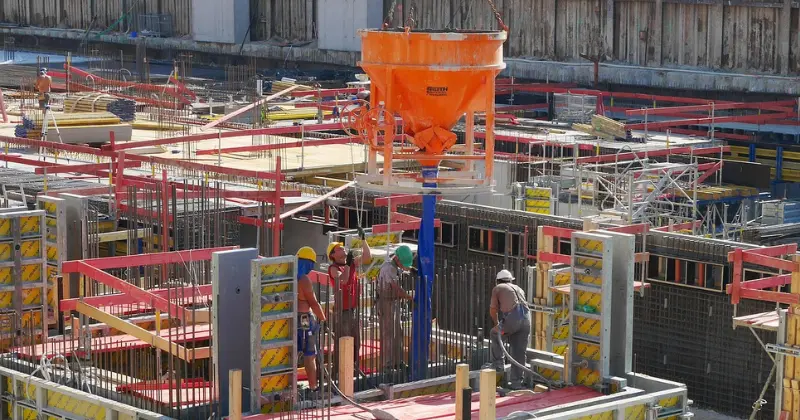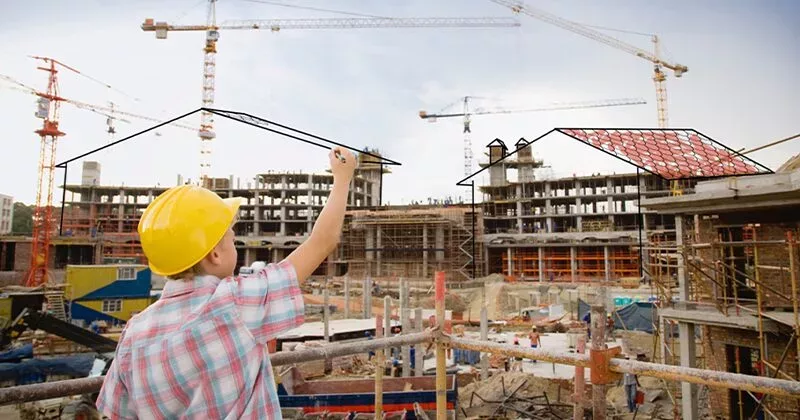10 mins read
The Significance of Measuring Embodied Carbon in Australia’s Construction Industry

As the world grapples with the challenges of climate change, industries are recognizing the crucial role they play in reducing carbon emissions. The construction sector, in particular, holds immense potential to mitigate its environmental impact by measuring and reducing embodied carbon in building materials and processes. In Australia, this issue has gained substantial attention, with organizations like the Property Council of Australia and the Green Building Council Australia emphasizing the importance of understanding and addressing embodied carbon. This article explores the significance of measuring embodied carbon in Australia’s construction industry and looks at how we can begin to implement this.
Embodied carbon refers to the carbon emissions associated with the production, transportation, and assembly of building materials, as well as the construction process itself. While operational carbon (emissions resulting from a building’s day-to-day operations) has traditionally received more attention, the construction industry is now recognizing that embodied carbon accounts for a substantial portion of a building’s total emissions over its lifecycle. Measuring embodied carbon is crucial for several reasons.
1. Climate Change Mitigation
The construction sector is a significant contributor to global carbon emissions. According to the Global Alliance for Buildings and Construction, the building and construction industry accounts for nearly 40% of global energy-related CO2 emissions. By accurately measuring embodied carbon, stakeholders can identify the most carbon-intensive elements of construction and take targeted actions to reduce their environmental impact. This can include adopting energy-efficient design strategies, utilizing low-carbon materials, and implementing sustainable construction practices.
2. Sustainable Material Choices
Measuring embodied carbon allows construction professionals to make informed decisions regarding the materials they use. By assessing the carbon footprint of different materials and construction methods, stakeholders can identify alternatives that have lower embodied carbon. For example, utilizing recycled materials, such as reclaimed timber or recycled concrete, can significantly reduce the environmental impact associated with new material extraction and production. Similarly, opting for locally sourced materials reduces transportation emissions, supporting regional economies while minimizing carbon emissions.
3. Regulatory Compliance and Market Demand
Governments worldwide are implementing stricter regulations and standards to address climate change and promote sustainable construction practices. Measuring embodied carbon enables the construction industry to stay ahead of these regulations, ensuring compliance and avoiding potential penalties or limitations. Additionally, market demand for sustainable buildings is growing, with tenants and investors prioritizing environmentally responsible practices. Measuring and disclosing embodied carbon performance can enhance a project’s marketability, attracting environmentally conscious clients and tenants.
In Australia, particularly, many organisations are reviewing the importance of increased sustainability in construction. Just this month, The Property Council of Australia and the Green Building Council Australia released a report entitled “Every Building Counts,” which includes a suite of policy recommendations that would help Australia achieve its construction decarbonization goals.
Within the report, the economic benefits of reducing embodied carbon were emphasized, such as lower operational costs, increased asset value, and improved marketability. It also stresses the need for collaboration across the supply chain, including architects, engineers, contractors, and material suppliers, to collectively address embodied carbon reduction. By sharing best practices, fostering innovation, and setting ambitious targets, the construction industry can drive positive change and achieve significant carbon reductions.
Previously, the Green Building Council Australia had also launched the Carbon Positive Roadmap, aiming to achieve a zero-emissions built environment in Australia. This initiative encourages the adoption of carbon reduction strategies, including measuring embodied carbon, to achieve sustainable construction practices and contribute to the nation’s climate goals.
We at RIB Software have recognized the significance of measuring embodied carbon and are developing innovative solutions to address this challenge. Our software suite offers robust tools for quantifying and managing embodied carbon in construction projects.
RIB CostX, which is heavily used by quantity surveyors and estimators throughout Australia and the world, is a comprehensive construction estimating and takeoff solution that integrates embodied carbon calculations into its platform, enabling professionals to evaluate the environmental impact of different design and material choices. By incorporating embodied carbon software into our cost-estimating processes, construction companies can effectively identify opportunities to reduce emissions while maintaining cost efficiency.

RIB CostX utilizes carbon databases such as EC3 by Building Transparency to assess the embodied carbon of various materials, allowing construction professionals to compare the environmental impact of different options. It considers factors such as the carbon emissions associated with raw material extraction, manufacturing processes, transportation, and end-of-life considerations. This comprehensive analysis provides valuable insights into the carbon footprint of a construction project and empowers stakeholders to make informed decisions.
By incorporating CostX’s embodied carbon capabilities, construction professionals in Australia can enhance their ability to accurately estimate project costs while considering the environmental impact. This integration allows them to optimize material usage, reduce waste, and identify opportunities for carbon reduction throughout the project lifecycle.
The Australian construction industry has shown a growing interest in measuring embodied carbon, with numerous organizations and projects championing this cause. By actively addressing embodied carbon, Australia’s construction sector can play a pivotal role in achieving the country’s climate targets and transitioning to a more sustainable future.
Experience the embodied carbon capabilities of RIB CostX estimating software and get a free demo today! Together, we can create a built environment that minimizes its carbon footprint and contributes to a greener planet.

Most Recent
10 mins read
11 mins read
11 mins read
10 mins read
Blog Categories

Ebook











